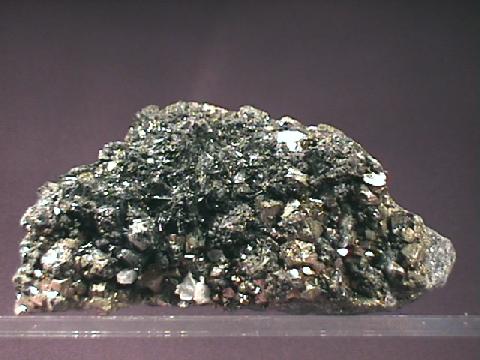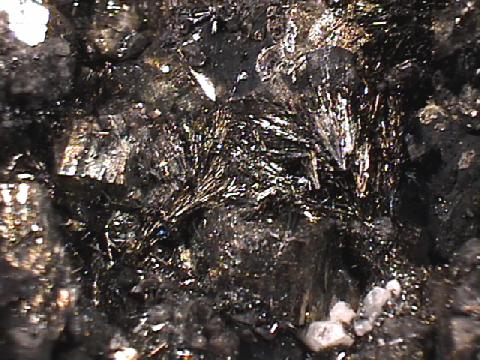 THE MINERAL JAMESONITE
THE MINERAL JAMESONITE
- Chemistry: Pb4FeSb6S14, Lead Iron Antimony Sulfide
- Class: Sulfides and Sulfosalts
- Uses: Mineral specimens
- Specimens
Jamesonite is one of a few sulfide minerals that form fine acicular crystals that appear as hair-like fibers.
The fibers may be so thick as to cover a specimen with hair-like fibers or it may be sparsely dessiminated between other minerals and may be confused with actual hairs.
Boulangerite and
millerite are two other sulfides that form similar acicular crystals and can be mistaken for jamesonite.
However, millerite is yellow and boulangerite has flexible crystals.
Jamesonite also forms larger prismatic crystals that can be confused with
stibnite.
Jamesonite crystals have less definition in its crystals and are more brittle.
Jamesonite is a sulfosalt, a segment of sulfides where the antimony acts more like a metal than a non-metal and occupies a position where it is bonded to sulfurs.
Jamesonite has been called feather ore and grey antimony.
PHYSICAL CHARACTERISTICS:
- Color is dark gray.
- Luster is metallic and silky.
- Transparency Crystals are opaque.
- Crystal System: Monoclinic; 2/m
- Crystal Habits include dense or sparse felted masses of acicular crystals.
Also in fiberous masses.
- Cleavage is good in one direction perpedicular to its length.
- Fracture is uneven.
- Hardness is 2 - 3
- Specific Gravity is 5.5-6.0
- Streak is gray-black.
- Associated Minerals include pyrite. sphalerite, galena, stibnite and arsenopyrite.
- Other Characteristics: Crystals are not flexible and are brittle.
- Notable Occurrences include Cornwall, England; South Dakota and Arkansas, USA; Zacatecas, Mexico and Rumania.
- Best Field Indicators crystal habit, brittleness, associations, color and luster.
 THE MINERAL JAMESONITE
THE MINERAL JAMESONITE




















